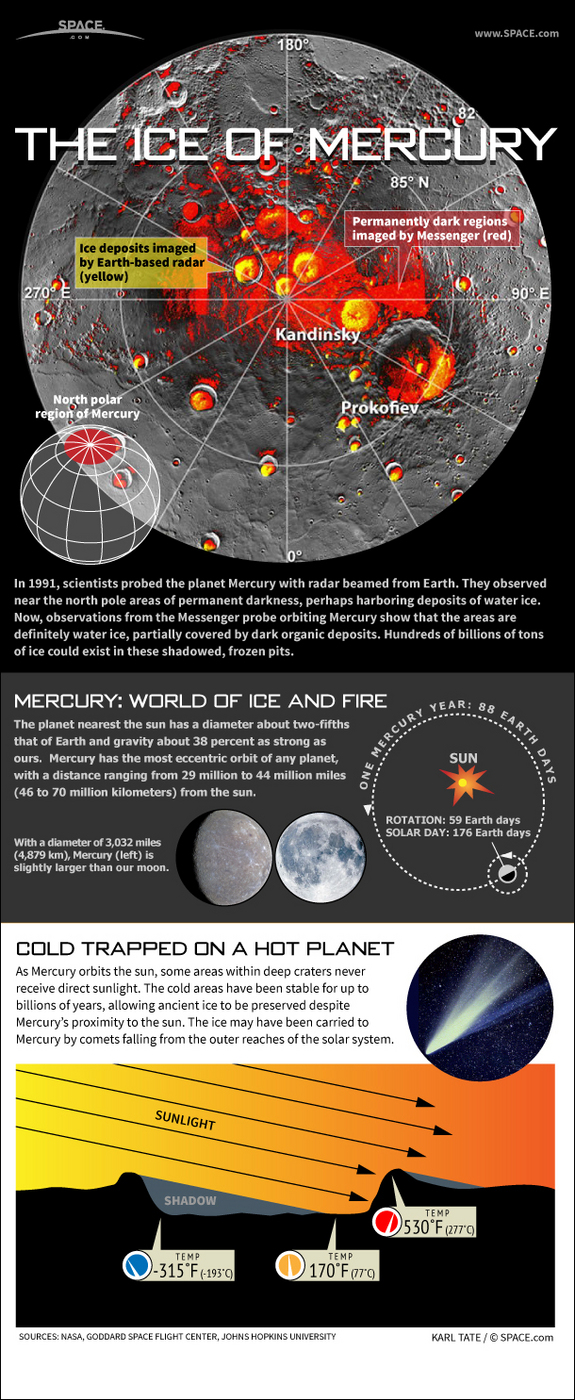Scientists confirmed the ice by using an instrument on the Messenger spacecraft that detects neutrons. It is suspected that Mercury’s south pole also harbors ice deposits, but the Messenger probe’s orbit has not allowed for measurements of the southern region yet.


Source SPACE.com: All about our solar system, outer space and exploration
In 1991, scientists probed the planet Mercury with radar beamed from Earth. They observed near the north pole areas of permanent darkness, perhaps harboring deposits of water ice. Now, observations from the Messenger probe orbiting Mercury show that the areas are definitely water ice, partially covered by dark organic deposits. Hundreds of billions of tons of ice could exist in these shadowed, frozen pits.
The planet nearest the sun has a diameter about two-fifths that of Earth and gravity about 38 percent as strong as ours. Mercury has the most eccentric orbit of any planet, with a distance ranging from 29 million to 44 million miles (46 to 70 million kilometers) from the sun. [Ice on Mercury Explained (Video)]
With a diameter of 3,032 miles (4,879 km), Mercury is slightly larger than Earth’s moon.
Planet Mercury: Simple Facts, Tough Quiz
As Mercury orbits the sun, some areas within deep craters never receive direct sunlight. The cold areas have been stable for up to billions of years, allowing ancient ice to be preserved despite Mercury’s proximity to the sun. The ice may have been carried to Mercury by comets falling from the outer reaches of the solar system.
Scientists confirmed the ice by using an instrument on the Messenger spacecraft that detects neutrons. It is suspected that Mercury’s south pole also harbors ice deposits, but the Messenger probe’s orbit has not allowed for measurements of the southern region yet.
- Latest Mercury Photos from Messenger
- How Hot is Mercury?
- Most Enduring Mysteries of Mercury
- See also 01 December 2012 GEI News article







